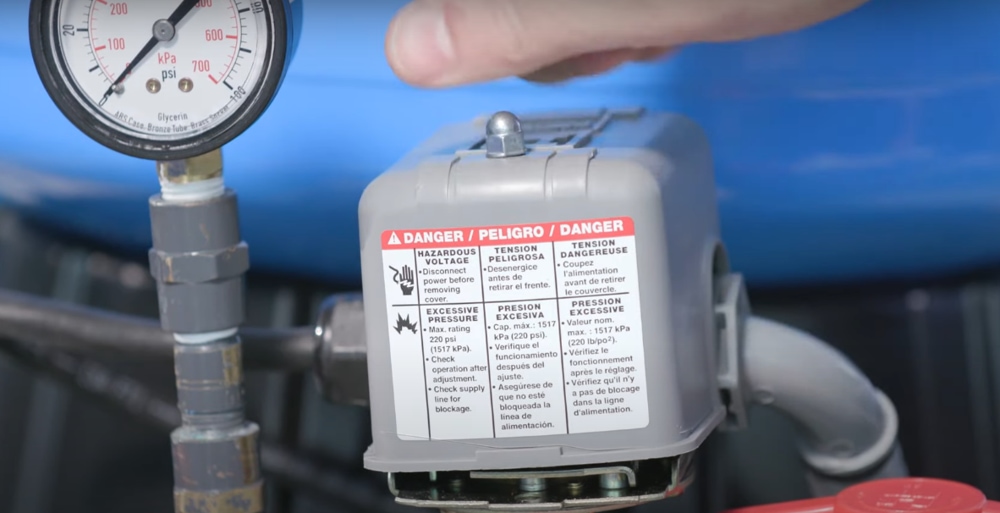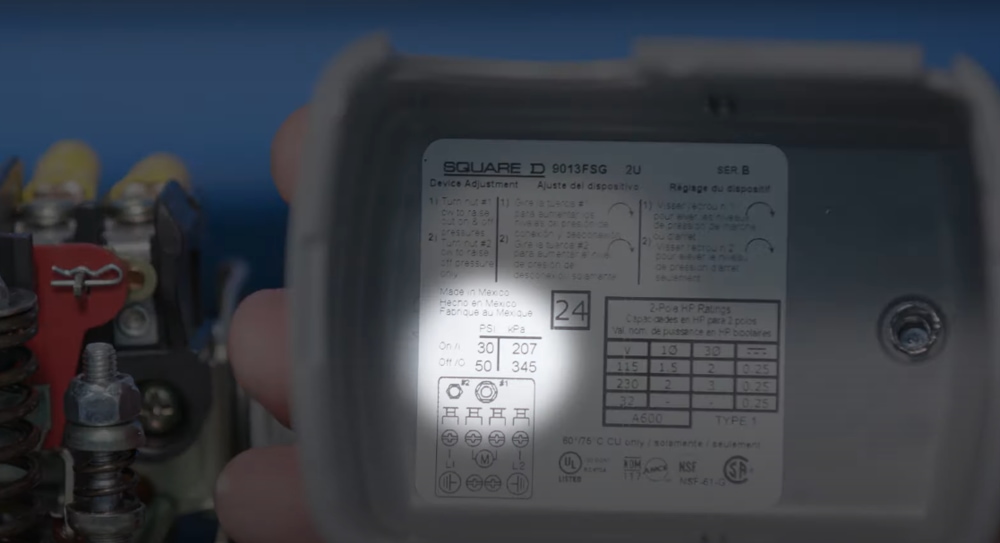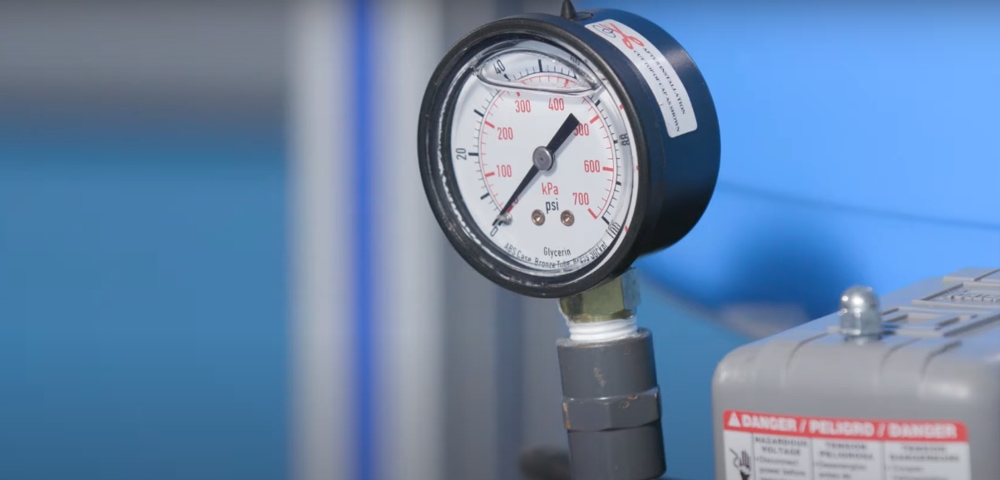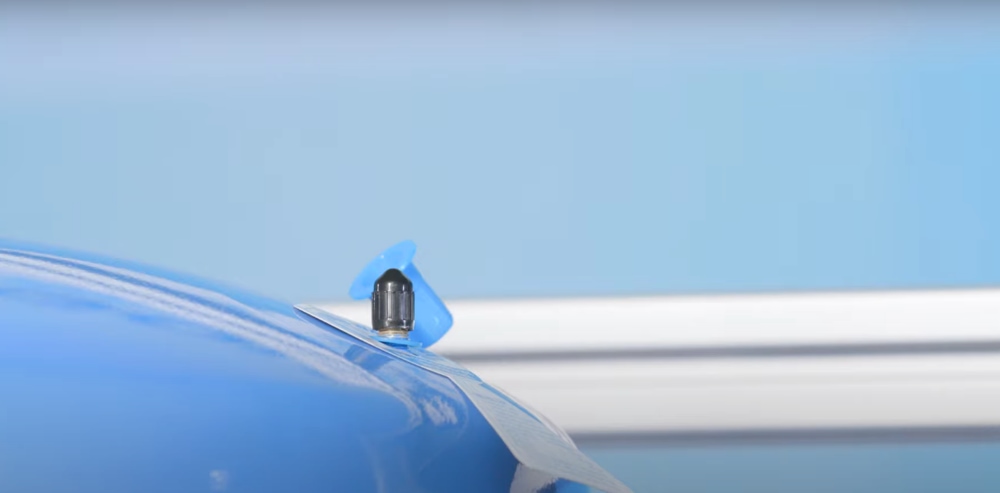The rule is simple: the air pressure on your well water tank must 2-3 PSI below the pressure switch’s cut-on point. Water tanks come with different pressure readings such as 20/40, 30/50, and 40/60. The air pressure on your well water tank must be 18 for a 20/40 water tank, 28 for a 30/50 water tank, and 38 for a 40/60 water tank.
So now that you know what should be the correct pressure on your well water tank? It is time to see how to check this pressure on a new tank or one installed at your home.
How to Check Air Pressure in your Well Water Tank?
You will need a high-quality air pressure gauge for this. You can also use the one you use with your car but make sure it is accurate.
The pressure tanks used for domestic water systems are shipped with 38 PSI pressure. It is made mandatory by the department of transportation for safe shipping.
Steps to Check Air Pressure in your Well Water Tank
- Turn off the power to your water tank and remove the plug.
- Locate the pressure switch and remove the cover. The pressure switch is located on the pump or the discharge of the diaphragm tank.

- You will find the cut-on and cut-off pressure settings for your water tank underneath the cover. Check user manual if you can’t read the settings on the label. You can also search online with your model number.

- Identify the cut-on pressure; it is the lower number on the sticker. For example, if you see 30/50 underneath the cover, 30 is the cut-on pressure, and 50 is the cut-off pressure.
- The air pressure must be 2-3 PSI below the cut-on pressure. In this case, it will be 27-28 PSI. A 0.1-0.5 PSI difference doesn’t impact the pump’s working and flow rate.
- It is now time to determine the air pressure in your water tank. Make sure that the unit is off before proceeding to the next step.
- Open a nearby faucet so you can empty the tank quickly. The tank will be empty once the reading on pressure gauge is 0 PSI.

- Locate the air valve on your well water pressure tank. It is usually located at the top, bottom, or side of the tank.

- Remove the valve cap and connect your pressure gauge. Don’t change the settings if the reading is 2-3 PSI below the cut on point.
How to Adjust Air Pressure in a Well Water Tank?
You will need an air compressor, inflator, or air chuck for this task.
- For Removing the Air: Use a screwdriver or the inflator’s back to push the air out of the valve.
- For Adding Air: Insert the inflator into the valve and turn on the air compressor. Air will flow into the valve. Recheck the pressure and make sure the pressure is under 2-3 PSI below the cut-on pressure.
- Reinstall the valve cap back after you are done adjusting the pressure.
Frequently Asked Questions
What is the difference between air pressure and water pressure in a water tank?
Many users confuse air pressure with water pressure in a water tank. The air pressure in a water tank is the pressure compressed air exerts at the top of the water to force water out of the tank.
The water pressure is related to your well’s pump working. It controls the pump’s functionality and determines at which pressure the pump will turn on and turn off.
What are cut-on and cut-off pressures in a well water tank?
The cut-on pressure is the low pressure that starts the pump, and the cut-off pressure is the high pressure that turns off the pump.
How can I find cut-on pressure on my water tank from the pressure gauge?
If you can’t find the pressure switch settings, you can determine the cut-on pressure by simply closing all the faucets and then opening one nearby faucet. Take note of the pressure gauge reading when the pump turns on. This is the cut-on pressure on your water tank.
How to detect an air leak on my well water pressure tank?
If you think that your well water pressure tank has an air leak, you can check this by using soapy water on the valve and tank seams to check for air leaks. If there is a leak at the bottom of the tank, you can easily notice it by water dripping out from it.
How often should I check the air pressure on my well water tank?
You must not frequently check the air pressure on your well water tank as you can lose pressure every time you check. The best time to check such settings is after 6-8 months or when you notice a sudden drop in the water pressure at your taps.
What happens if the air pressure is higher than the cut-on pressure of the water tank?
If you use a captive air tank, higher air pressure will not let the pump start. If you are using a bladderless water tank, this problem will self-correct itself as the excess air will gush out every time you open a tap. However, you should not let the air pressure exceed the cut-on pressure regardless of the pump type.
Why does a water tank’s bladder fail?
A well tank bladder is a critical piece of equipment for its optimum performance. The bladder flexes back and forth when the pump cycles on and off. This strains the bladder, resulting in wear and tear over time, developing tiny holes in the bladder. The leaks allow air to escape and force pressure to drop.
The tank losses pressure and the well pump starts cycling on and off more frequently than usual. It leads to faster expansion & contraction, resulting in wider holes, and the bladder ultimately fails.
You can avoid this by getting a big-sized pressure tank. A smaller tank will not hold adequate water for your needs, forcing the pump to cycle frequently. This also damages the pump and reduces its capacity.
Moreover, the wrong pressure setting on the pump can also damage the pump and pressure tank.
Final Words
Air pressure is a critical factor that makes your well water tank work smoothly and optimally. You must make sure that it is kept constant and within the safe limit to ensure the longevity of all the well components and parts.
